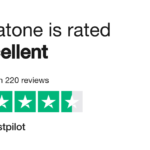In the world of skincare, many products and ingredients are acclaimed for their ability to promote radiant, even-toned skin. Among these, glutathione vs kojic acid are two popular ingredients frequently used in products targeting hyperpigmentation, dark spots, and uneven skin tone. Despite their similar purposes, they work through different mechanisms and offer unique benefits. Here, we compare glutathione and kojic acid to help you understand which might best suit your skin goals.
Understanding Glutathione
Glutathione is a powerful antioxidant naturally produced by the liver and present in every cell of the body. It is made of three amino acids — glutamine, glycine, and cysteine. Glutathione plays a critical role in maintaining cellular health and preventing oxidative stress, which can damage skin cells and accelerate aging.
How Glutathione Works in Skincare
- Skin Brightening and Anti-Aging: Glutathione reduces melanin production in the skin, which can help in achieving a brighter complexion. It inhibits tyrosinase, an enzyme involved in melanin synthesis, leading to a gradual lightening of hyperpigmented areas.
- Detoxifying Properties: As an antioxidant, glutathione helps in neutralizing free radicals and toxins that accumulate in the skin due to sun exposure, pollution, and other environmental factors. This makes it beneficial for improving skin clarity and reducing dullness.
- Anti-Inflammatory Effects: Glutathione’s antioxidant nature also reduces inflammation, helping those with skin conditions like acne or redness.
Application and Usage of Glutathione
Glutathione is available in various forms, including topical creams, serums, oral supplements, and even injections. When used topically, glutathione can take several weeks to show noticeable results, as it works gradually to reduce melanin production and promote a brighter, more even skin tone.
Understanding Kojic Acid
Kojic acid is a byproduct of certain fungal species and is commonly found in fermented foods like soy sauce and rice wine. In skincare, kojic acid has gained popularity due to its effective skin-brightening properties.
How Kojic Acid Works in Skincare
- Inhibition of Melanin Production: Kojic acid works by blocking the production of tyrosine, an amino acid needed for melanin synthesis. By doing so, it helps reduce hyperpigmentation, dark spots, and sun damage, making it ideal for those with discoloration issues.
- Mild Exfoliation Properties: Kojic acid has gentle exfoliating abilities, which help remove dead skin cells, allowing new, fresh cells to come to the surface. This results in a smoother and more radiant complexion.
- Antibacterial Properties: Kojic acid also possesses antibacterial qualities, making it beneficial for people with acne-prone skin. It helps control bacteria on the skin, reducing acne flare-ups and associated pigmentation.
Application and Usage of Kojic Acid
Kojic acid is commonly used in creams, serums, and soaps. However, it can be harsh for those with sensitive skin, as it may cause irritation, redness, or itching if used in high concentrations. Dermatologists often recommend patch-testing products containing kojic acid to ensure skin compatibility.
Comparing Glutathione and Kojic Acid: Which Is Better for You?
Both glutathione and kojic acid can be beneficial for those seeking a brighter, more even skin tone. However, their effectiveness and suitability may vary based on skin type, concerns, and individual needs.
| Feature | Glutathione | Kojic Acid |
| Mechanism | Antioxidant and melanin inhibitor | Blocks melanin synthesis and mildly exfoliates |
| Ideal For | Reducing oxidative stress and lightening skin gradually | Treating hyperpigmentation, dark spots, and acne scars |
| Skin Compatibility | Generally safe for all skin types | May cause irritation for sensitive skin |
| Results | Gradual improvement over time | Faster visible results, but potential for sensitivity |
| Application | Creams, serums, supplements, and injections | Creams, serums, and soaps |
Pros and Cons of Glutathione
Pros:
- Gentle and suitable for sensitive skin types
- Improves overall skin health due to antioxidant properties
- Less likelihood of irritation
Cons:
- Gradual results; may require long-term use
- Limited effectiveness when applied topically in some cases
Pros and Cons of Kojic Acid
Pros:
- Effective in targeting dark spots and hyperpigmentation quickly
- Antibacterial properties beneficial for acne-prone skin
Cons:
- May cause irritation or dryness, especially in sensitive skin
- Requires careful usage and possible patch testing
Choosing the Right Option for Your Skin Goals
When choosing between glutathione and kojic acid, it’s essential to consider your skin type and primary skincare goals.
- For Sensitive Skin or Gradual Brightening: Glutathione may be a better choice as it is gentler and offers additional anti-aging and antioxidant benefits. Those looking for overall skin improvement without the risk of irritation may find glutathione to be more suitable.
- For Targeted Spot Treatment and Faster Results: Kojic acid may be ideal for individuals looking to treat specific areas of hyperpigmentation or dark spots quickly. However, it’s essential to monitor skin reactions, as kojic acid can be irritating for sensitive skin types.
Can You Use Glutathione and Kojic Acid Together?
Using both glutathione and kojic acid together can be beneficial for those with resilient skin types who are seeking an enhanced skin-brightening effect. The combination may offer a comprehensive approach to reducing hyperpigmentation, as glutathione provides gradual brightening, while kojic acid targets pigmentation more directly.
However, consulting a dermatologist is recommended, especially if you have sensitive skin or any underlying skin concerns. Dermatologists can guide on product selection, concentrations, and potential side effects.
Conclusion
Glutathione and kojic acid are both effective ingredients for achieving a brighter, more even complexion. Glutathione is ideal for those looking for gentle, long-term skin benefits, while kojic acid offers quicker results for treating specific pigmentation concerns. By understanding their unique properties and effects, you can make a more informed decision about which ingredient best aligns with your skincare goals.
Ultimately, whether you opt for glutathione, kojic acid, or a combination of both, incorporating these ingredients into a well-rounded skincare routine can help you on your journey to radiant, healthier-looking skin.







